Some natural substances are also considered minerals, which under normal conditions are liquids (for example, native mercury, which comes to a crystalline state at a lower temperature). Water, on the contrary, is not considered a mineral, considering it as a liquid state (melt) mineral ice.
Some organic substances - asphalts, bitumens - are often mistakenly classified as minerals, or they are classified into a special class of "organic minerals", the expediency of which is very controversial.
Some minerals are in an amorphous state and do not have a crystalline structure.
This applies mainly to the so-called metamict minerals, which have the external form of crystals, but are in an amorphous, glass-like state due to the destruction of their original crystal lattice under the action of hard radioactive radiation from radioactive elements (U) that are part of their own composition. A distinction is made between minerals that are clearly crystalline and metamict minerals that have the external form of crystals, but are in an amorphous, glassy state.
"Mineral is a chemically and physically individualized natural physicochemical reaction in a crystalline state" (A. A. Godovikov, "Mineralogy", M., "", 1983).
According to the definition of Academician N.P. Yushkin (1977), “minerals are natural discrete organically integral systems of interacting atoms, ordered with a three-dimensional unlimited periodicity of their equilibrium positions, which are relatively indivisible structural elements of the migratory rocks of dispersed formations. The whole aggregate of minerals constitutes the mineral level of the structural company of inorganic matter, the specificity of which is the crystalline state, which determines the properties, laws of functioning and methods of studying mineral systems. "
The concept "mineral" is often used in the meaning of "mineral species", that is, as a set of mineral bodies of a given chemical composition with a given crystalline structure.
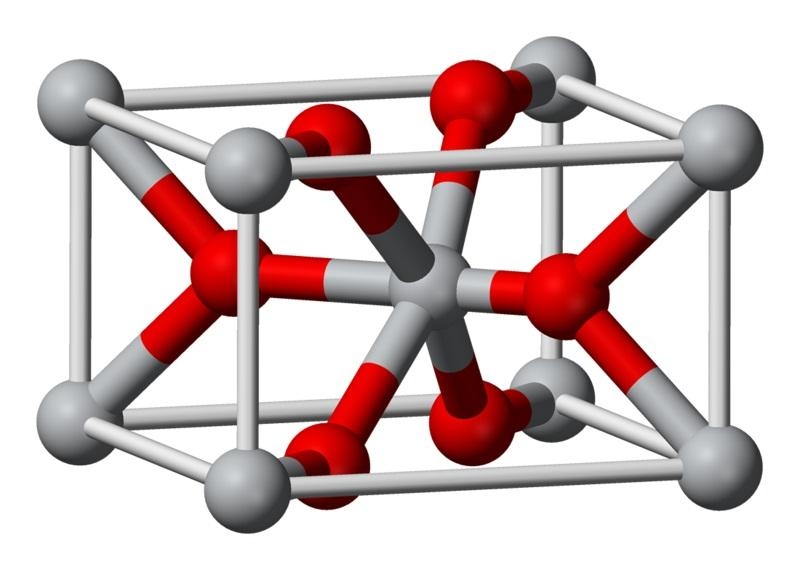
The crystal structure is both the most important diagnostic characteristic of a mineral and a carrier of genetic information embedded in the mineral, which, among other things, is deciphered by mineralogy. The question of the advisability of classifying some non-crystalline products as minerals as “exceptions to the rule” is controversial and is still being debated by scientists. At the same time, modern research has shown that some, as previously thought, amorphous geological products are more complex than previously thought and have an internal "long-range order structure."
Colloidal phases exist only as intermediate in processes mass transfer and mineral formation and are one of the physicochemical media in which or from which the crystallization of minerals occurs.
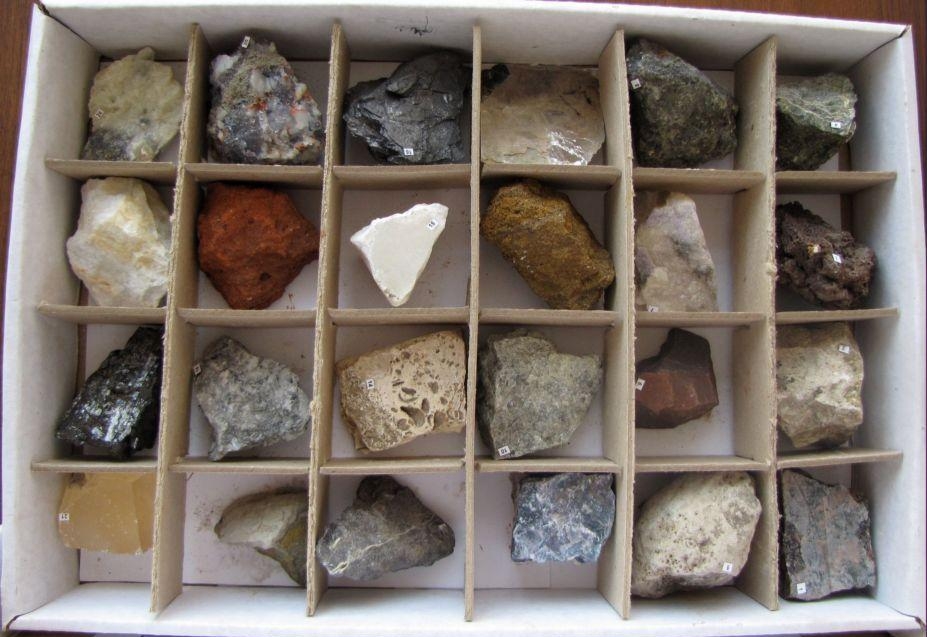
Mineral is
Classification of minerals
Attempts to systematize minerals on a different basis were already made in the ancient world. Initially (from Aristotle to Sina and Biruni) they were divided according to their external characteristics, sometimes involving genetic elements, often the most fantastic. From the late Renaissance to the early 19th century. dominated by classifications based on external signs and physical properties of minerals. In the second half of the 19th - early 20th centuries. chemical classifications of minerals (the works of P. Grot, V. I. Vernadsky, and others) have become extremely widespread. Since the 20s. 20th century crystal-chemical classifications, in which the chemical composition and crystal structure of minerals are taken as a basis, are beginning to play an increasingly important role. In modern mineralogy, there are many different variants of mineralogical systematics. In the most common classification of minerals into types and classes by chemical composition.
Smaller taxa within classes (subclasses, divisions, groups, etc.) are distinguished by the type of structure (silicates) and in accordance with the degree of complexity of the composition. When identifying fractional taxa, they are also based on the grouping of cations and anions that are close in geochemical and crystallochemical terms. Special studies are being carried out in the direction of creating a natural genetic-structural and chemical-structural systematics of minerals.
There are many options for classifying minerals. Most of them are built according to the structural-chemical principle.
According to their prevalence, minerals can be divided into rock-forming - which constitute the basis of most rocks, accessory - often present in rocks, but rarely composing more than 5% of the rock, rare, the occurrence of which is single or few, and ore, widely represented in ore deposits.
The most widely used classification is by chemical composition and crystal structure. Substances of the same chemical type often have a similar structure, therefore, minerals are first divided into classes according to chemical composition, and then into subclasses according to structural characteristics.
The currently generally accepted crystal chemical classification of minerals subdivides all of them into classes and looks as follows:
Native elements.
These are minerals made up of one element. Although they are rare and make up only 0.1% of the weight of the earth's crust, their significance for humans is great. It is enough to list the representatives of this group:
Height = "478" src = "/ pictures / investments / img778313_5_Serebro_samorodnoe_s_kvartsevyim_mineralom.jpg" title = "(! LANG: 5. Native silver with quartz mineral" width="690">!}
Mineral is
It is much less common in its native form, which is more prone to form chemical compounds. Nuggets of rare metals are extremely rare in nature: palladium (Pd), osmium (Os), iridium (Ir). Most of the minerals of this group are found mainly or only in native form (Au, Ag, Pt, Pd, Ir, Os). The origin of almost all native elements is endogenous, most often hydrothermal. The exception is sulfur, which can be of both endogenous and exogenous origin. Native carbon, which forms two basic polymorphic modifications: diamond and graphite, is considered separately. Diamond is formed by igneous processes; it is most often found in kimberlites.
Graphite is formed from sedimentary rocks rich in organic matter as a result of metamorphic processes.
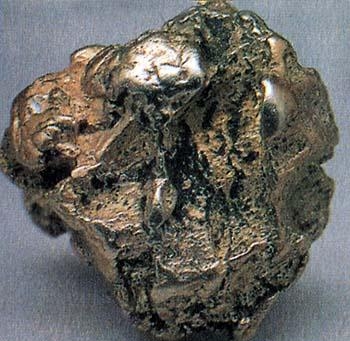
II. Section Sulfides, sulfosalts and similar compounds.
1. Class Sulfides and similar compounds.
2. Sulfosalt class.
The section under consideration includes sulfur, selenium, tellurium, arsenic and antimony compounds. metals... These include a very significant number of industrially important minerals that play an essential role in the composition of numerous deposits of metallic minerals.
The largest number of minerals is represented by sulfur compounds (sulfides, sulfosalts). All of them, with the exception of hydrogen sulfide, are found in nature in a solid state.
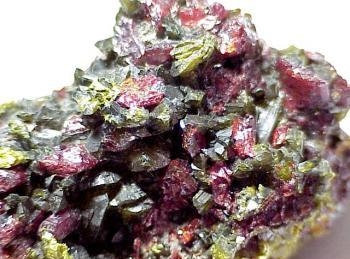
III. Section Halogen compounds (Halides).
1. Class of Fluoride.
2. Class Chlorides, bromides and iodides.
Starting with this type of compounds, we will deal with minerals that differ sharply in their properties from those considered.
In the overwhelming mass, these will already be compounds with a typical ionic bond, which determines completely different properties of minerals. Their most prominent representatives are halogen compounds metals.
From a chemical point of view, the related minerals are represented by acid salts: HF, HCl, HBr and HJ; accordingly, among these minerals, fluorides, chlorides, bromides and iodides are distinguished.

IV. Section Oxides and hydroxides.
1. Class Oxides.
2. Class Hydroxides.
This class includes minerals that are compounds of various elements with oxygen, and water is also present in hydroxides. In terms of the number of minerals included in it, it is in one of the first places, it accounts for about 17% of the mass of the entire earth's crust (of which silicon oxides - about 12.5% and iron oxides - 3.9%). Minerals of this class are formed both under endogenous and exogenous conditions.

The luster is glassy, oily at the fracture. Solid. Colorless, white, grayish, smoky black, pink, purple, green. Doesn't give a trait. Cleavage is absent. The fracture is uneven. Continuous dense, loose (quartz sand); in addition, blotches, individual crystals or druses. The crystals are in the form of a hexagonal prism topped with a pyramid. The crystal edges are covered with cross-hatching. The system is trigonal. Crystals are overgrown or ingrown. In Kazakhstan, a rock crystal was found the size of a two-story house, its weight is 70 tons.
In areas where sands are spread (in deserts), crystals and druses of gypsum (pseudomorphs of quartz over gypsum) are found, penetrated by grains of sand, which imparts to these formations a greater hardness that is not inherent in gypsum.
V. Section Oxygen salts (hydroxy salts).
1. Class of Nitrates.
2. Class Carbonates.
3. Class Sulfates.
4. Class Chromates.
5. Grade of Tungsten.
6. Class Phosphates, arsenates and vanadates.
7. Borat class.
8. Grade Silicates.
A. Island silicates.
B. Chain silicates.
B. Tape silicates.
D. Layered silicates.
D. Frame silicates.
Among the salts, first of all, there are anhydrous and aqueous salts (i.e., containing H2O molecules in their composition).

Vi. Section Organic compounds.
In the systematics of minerals, the class Organic minerals stands as if apart from others, since the products included in it, although they are natural chemical substances with a fairly definite constant composition and properties, are devoid of a crystalline structure.
They cannot be characterized from a crystal-chemical point of view, but traditionally refer to minerals, having much more similarities than differences with them. Note, however, that this is not all natural organic matter, and the assignment to this section of each specific natural organic goods requires a thoughtful and responsible approach.
Structure and chemical composition of minerals
Depending on the chemical composition of minerals and physicochemical parameters, there is the type of chemical bond between individual elements and, as a consequence, the regularity of their spatial distribution in the crystal structure of minerals.
A significant change in the composition causes a change in the structure and a transition to a substance with a new structure, i.e. to another mineral. The usual deviations of the real structure of minerals from the ideal are in individual nodes of the crystal lattice, associated with the appearance, for example, of impurities in interstices, a change in the valence of some of the cations (anions).
As a result of various defects (vacancies, impurity, radiation and other defects, the entry of foreign ions or molecules, for example, water into channels and other lattice cavities, changes in the charge of cations and anions, etc.) and dislocations, mineral crystals can acquire a block structure. Real minerals sometimes form so-called. ordering series (for example, feldspars), when the distribution of various cations over structural positions deviates to one degree or another from the correct order inherent in ideal crystals and tends to order with decreasing temperature.
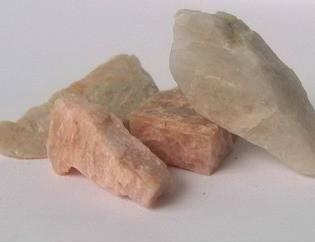
No less widespread are the phenomena of the decomposition of solid solutions (mixed crystals), which are expressed in the specific structures of minerals.
Minerals with layered crystal lattices (for example, mica, molybdenite, sphalerite, clay minerals, chlorites, graphite, etc.) are characterized by the phenomenon of polytypy, in which adjacent layers (or packets of layers) turn out to be somewhat rotated relative to each other.
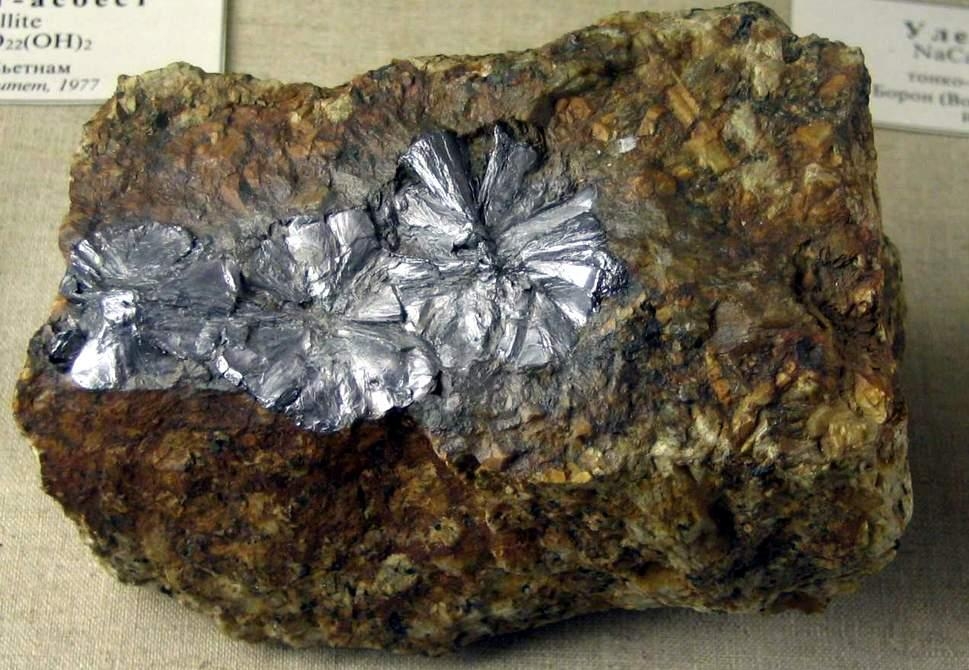
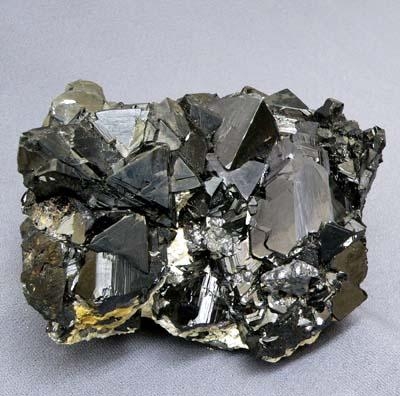
As a result of such a rotation, modifications (or polytypes) arise, the unit cells of which have the same parameters along two axes and different ones along the third. The formation of polytypes is explained by the conditions of crystal growth (in particular, kinetic factors and the spiral growth mechanism).
In the case of isomorphic series, when isolating mineral species, they are guided by the following rules: in two-component (binary) solid solutions, two mineral species are distinguished (with the content of end members from 0 to 50 and from 50 to 100 molecular%), in three-component ones - three. Earlier, in binary isomorphic mixtures, three mineral species were distinguished, the names of which were fixed in the mineralogical nomenclature.
Along with this, there are some other principles for the isolation of mineral species in mineralogy. So, if representatives of a given series are of particular importance in terms of prevalence and individual intermediate members of a series of solid solutions are typical for certain parageneses, the allocation of a mineral species becomes fractional and is often based on a number basis. An example is plagioclase, among which albite is distinguished.
Crystals of real minerals often show zonal or sectorial, block or domain structure; isomorphic impurities can be distributed in them statistically (randomly), occupy strictly defined structural positions, or be grouped into clusters; the incorporation of impurity components into the minerals in the form of flat insertions, etc. was found.
The study of the real structure and composition of mineral crystals provides important information about the conditions of mineral formation.
Chemical composition and, chemical and crystal chemical formulas. The composition of minerals includes all stable and long-lived isotopes of the elements of the periodic system, except for inert gases (helium and argon can accumulate in structural channels and cavities of crystal lattices of minerals as radiogenic products or as a result of capture from the atmosphere). But the mineral-forming role of various elements is not the same. Impurities can enter minerals not only isomorphically, but also by sorption, as well as in the form of mechanical mineral or gas-liquid microinclusions. These series (series) determine the boundaries of variations in the composition of minerals, and thus fluctuations in their physical properties: density, hardness, optical, magnetic and other parameters of the unit cell, melting point, etc.
About 25% of the total number of mineral species in the earth's crust are silicates and aluminosilicates; about 18% is accounted for by phosphates, arsenates and their analogs, about 13% - by sulfides and their analogs, about 12% - by oxides and hydroxides. Minerals belonging to other classes of chemical compounds account for about 32%.
In terms of prevalence, aluminosilicates (especially feldspars) and silicates are sharply dominant in the earth's crust, followed by oxides (primarily quartz) and hydroxides, and then carbonates; in total, they make up about 98% of the upper part of the earth's crust (up to a depth of 16 km).
The composition of minerals is expressed by its chemical formula - empirical, semi-empirical, crystal-chemical. The empirical formula reflects only the relationship between individual elements in minerals. In it, the elements are located from left to right as the number of their groups in the periodic table increases, and for elements of one group - as their ordinal numbers decrease, i.e. as their strength characteristics increase.
Elements that form isomorphic mixtures are given in parentheses, separated by commas, arranged depending on their content in minerals. After deciphering the crystal structures of the overwhelming majority of minerals and clarifying the positions of various elements in their crystal lattice, it became possible to introduce into mineralogy the concept of the basic law of the state of minerals, in which the chemical composition of minerals is closely linked to their structure. Expression the main law of the country minerals are so-called. structural, or crystal-chemical formulas, compiled and written according to certain rules. In these formulas, the elements that play the role of normal cations are written at their beginning in the same order as in the empirical formulas.
Rapid crystallization of minerals leads to a distortion of the shape of their crystals, the emergence of skeletal, dendritic, threadlike forms.
Crystals of minerals often bear characteristic shading on the edges, figures of growth and dissolution. Mass crystallization (for example, during the formation of eruptions rocks) creates an environment of constrained growth, and the minerals form irregularly shaped grains.
Mineral individuals and mineral aggregates compose mineral bodies.
Mineral properties
The physical properties of minerals are determined by their internal structure and chemical composition. The fluctuations in physical properties observed in real minerals are caused by the phenomena of isomorphism, structural defects, varying degrees of ordering (sometimes even within the same grain), and other factors. The physical properties of minerals along with their morphology are the basis for their diagnostics, searches, and in some cases, their practical use.
According to their density, minerals are divided into light (up to 2500 kg / m3), medium (2500-4000 kg / m3), heavy (4000-8000 kg / m3) and very heavy (more than 8000 kg / m3). The density of minerals is determined by its composition (content of heavy cations) and the type of structure, the degree of its perfection.
Mechanical properties include mineral hardness, elasticity, fracture, mineral cleavage, and detachment. Qualitative determination of the elastic properties of minerals is carried out visually, according to their reaction to mechanical stresses (the nature of deformations).
Distinguish between brittle minerals (most) and malleable (some native metals and sulfides), and among the leafy and flaky minerals - flexible elastic (micas) and inelastic, as well as inflexible (brittle micas). Fibrous minerals are brittle and flexible (chrysotile asbestos).
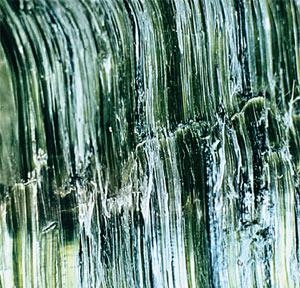
A fracture is an important diagnostic property of a mineral; it characterizes the surface of the fragments into which it splits (not by cleavage) upon impact. Preliminary field diagnostics of minerals is carried out according to external signs and simple physical properties: morphology of precipitates, relative hardness and density, feature color, gloss, tempering, cleavage, fracture, luminescence, etc.
To determine carbonates, methods of staining, "boiling" with HCl, are used. Sometimes they resort to the simplest qualitative chemical reactions (for example, for phosphorus with molybdenum-acidic ammonium). Many common minerals, rock-forming and ore, can be determined reliably enough already in the field.
Highly dispersed minerals, for example, clay minerals, which give fuzzy diffuse lines on X-ray diffraction patterns, are confidently diagnosed only under an electron microscope, using the electron diffraction method. The same method makes it possible to accurately diagnose minerals, polytypes of leafy and flaky minerals. Carbonates and other minerals containing volatile components are determined using thermal analysis.
The most important characteristics of minerals are crystal chemical structure and composition. All other properties of minerals derive from them or are interrelated with them. The most important properties of minerals, which are diagnostic signs and allow them to be determined, are as follows:
Crystal habit. It is found out by visual inspection, a magnifying glass is used to examine small samples
Hardness. Determined by the Mohs scale.
Glitter is a light effect caused by the reflection of a part of the light flux incident on a mineral. Depends on the reflectivity of the mineral.
Cleavage is the ability of a mineral to split along certain crystallographic directions.
Fracture is the specificity of the surface of the mineral on a fresh, non-cleaved cleavage.
Color is a sign that definitely characterizes some minerals (green malachite, blue lapis lazuli, red cinnabar), and is very deceiving in a number of other minerals, the color of which can vary over a wide range depending on the presence of impurities of chromophore elements or specific defects in the crystal structure ( fluorites, quartz, tourmalines).
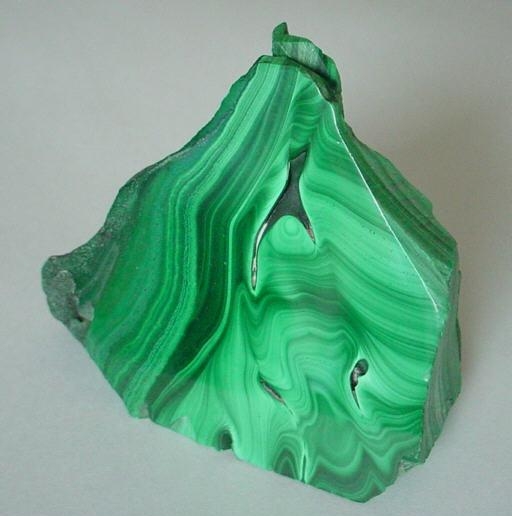
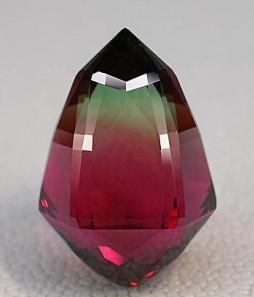
Dash color - The color of a mineral in a fine powder, usually determined by scratching the rough surface of a porcelain biscuit.
Brittleness is the strength of mineral grains (crystals), which is found during mechanical splitting. Fragility is sometimes associated or confused with hardness, which is not true. Other very hard minerals can crack easily, that is, they can be brittle (for example, diamond).

Obtaining objective quantitative data on the genesis of minerals makes it possible to reconstruct geological processes and the history of the formation of mineral deposits, i.e. to create a scientific basis for their search, exploration and industrial evaluation.
Application
About 15% of all known mineral types are used in technology and industry. Minerals are of practical value as sources of obtaining all metals and other chemical elements (ores of ferrous and non-ferrous metals, rare and trace elements, agronomic ores, raw materials for chemical industry). The technical application of many minerals is based on their physical properties.
Hard minerals (diamond, corundum, garnet, agate, etc.) are used as abrasives and anti-abrasives;
minerals with piezoelectric properties (quartz, etc.) - in electronics;
mica (muscovite, phlogopite) - in electrical and radio engineering (due to their electrical insulating properties);
asbestos - as a heat insulator;
talc - in medicine and in lubricants;
quartz, fluorite, Icelandic spar - in optics;
quartz, kaolinite, potassium feldspar, pyrophyllite - in ceramics;
magnesite, forsterite - as magnesia refractories, etc.
A number of minerals are precious and ornamental stones. In the practice of geological exploration, mineralogical prospecting and evaluation of mineral deposits are widely used.
The differences in the physical and chemical properties of minerals (density, magnetic, electrical, surface, radioactive, luminescent and other properties), as well as color contrasts, are the basis for the methods of enrichment of ores and separation of minerals, as well as geophysical and geochemical methods of prospecting and prospecting for deposits of mineral raw materials.
The industrial synthesis of single crystals of artificial analogs of a number of minerals for radio electronics, optics, abrasive and jewelry is being carried out on a large scale. industry.
Today, more than 4 thousand minerals are known. Every year, several dozen new mineral species are discovered and several are “closed” - they prove that such a mineral does not exist.
Four thousand minerals are very small compared to the number of known inorganic compounds (over a million).

Sources of
Wikipedia - The Free Encyclopedia, WikiPedia
geoman.ru - Library about nature and geography
mining-enc.ru - Mining encyclopedia
xumuk.ru - Site about chemistry
agrofak.com - Agronomist Assistant
iznedr.ru - From subsoil Of the earth
webois.org.ua - Portal about stones and minerals
catalogmineralov.ru - Catalog of minerals
Investor encyclopedia. 2013 .




